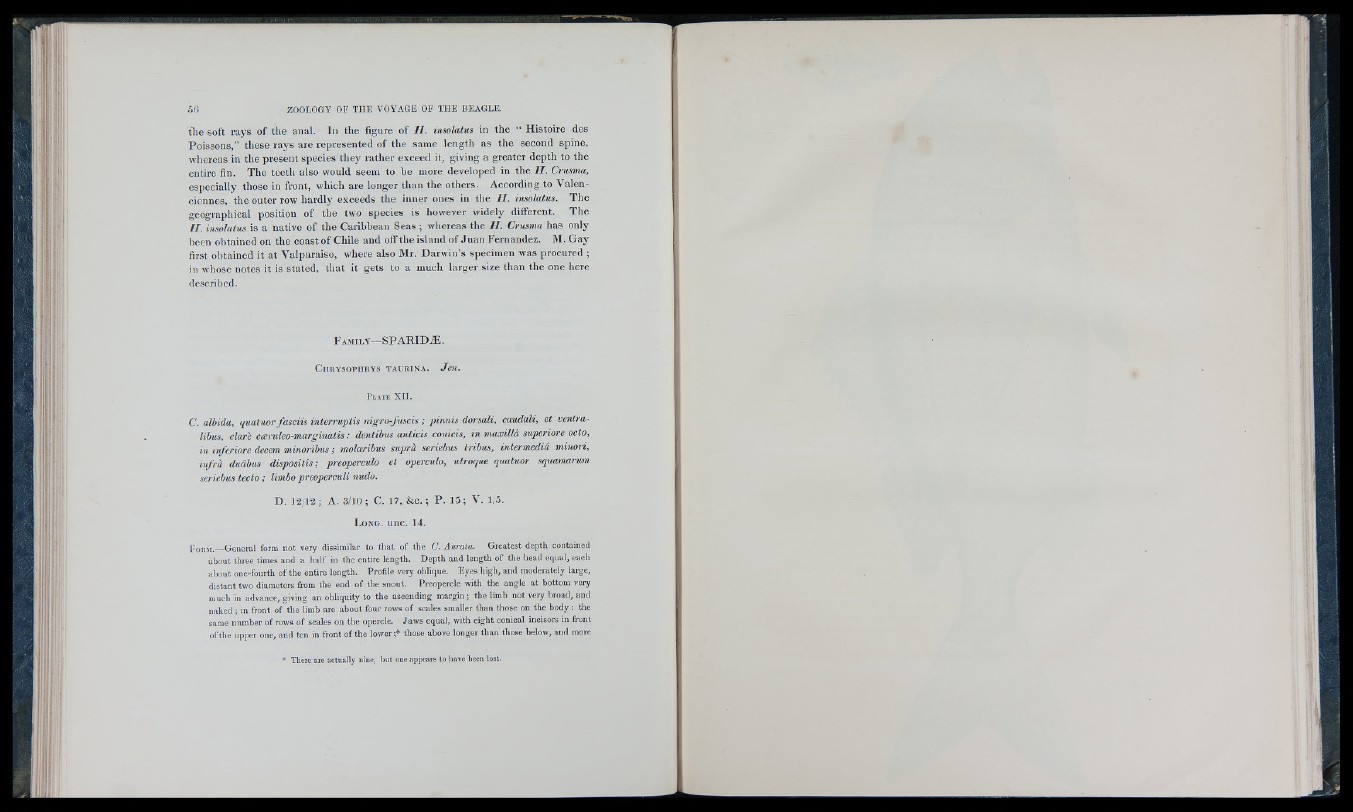
tlie soft rays of the anal. In the figure of H . insolatus in the “ Histoire des
Poissons,” tliese rays are represented of the same length as the second spine,
Avliereas in the present species they rather exceed it, giving a greater depth to the
entire fin. The teeth also would seem to be more developed in the l i . Crusma,
especially those in front, which are longer than the others. According to Valenciennes,
the outer row hardly exceeds the inner ones in the H . insolatus. The
geographical position of the two species is however widely different. The
II. insolatus is a native of the Caribbean S eas; wliereas the II. Crusma has only
been obtained on the coastof Chile and off the island of Juan Fernandez. M. Gay
first obtained it at Valparaiso, where also Mr. Darwin’s specimen was procured ;
in whose notes it is stated, that it gets to a much larger size than the one here
described.
F a m il y— S P A R ID ® .
C h r y s o p h r y s t a u r in a . Jen.
P l a t e X II.
C.albida, quatuor fasciis interruptis nigro-fuscis ; pinnis dorsali, caudali, et ventra-
libus, dare eceruleo-marginalis : dentibus anticis couicis, in maxilU superiore octo,
in inferiore decern minoribus ; molaribus suprà seriebus tribus, intermediá minori,
infrà duábus dispositis; preoperculo et operculo, utroque quatuor squamarum
seriebus tecto ; limbo preopercuU nudo.
D. i-2 12 ; A. 3/10 ; C. 17, &c. ; P . 15; V. 1,6.
L o n g . u n c . 14.
F o r m .— General form not very dissimilar to that of the C . A urata. G reatest depth contained
about three times and a h alf in the entire length. D epth and length of the head equal, each
about one-fonrth of the entire length. Profile very oblique. Eyes high, and moderately large,
distant two diameters from the end of the snout. Preopercle with the angle at bottom very
much in advance, giving an obliquity to the ascending margin ; the limb not very broad, and
naked ; in front of the limb are about four rows of scales smaller than those on the body : the
same number of rows of scales on the opercle. Jaw s equal, with eight conical incisors in front
of the upper one, and ten in front of the lower ;• those above longer than those below, and more
* There are actually nine, but one appears to have been lost.